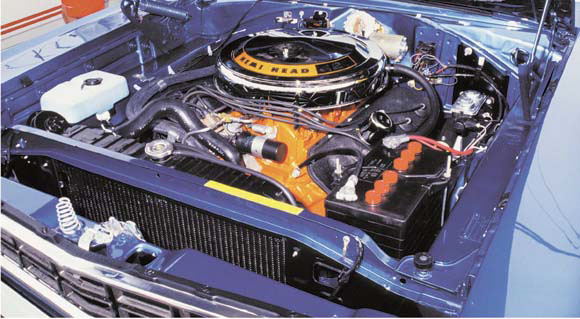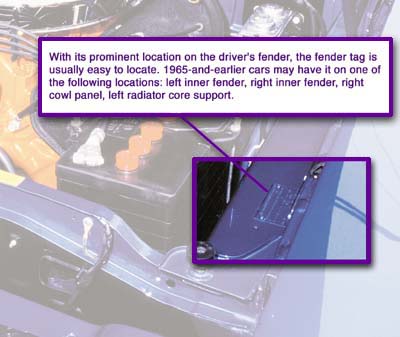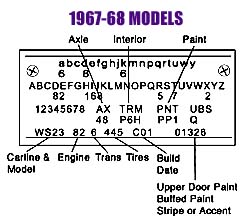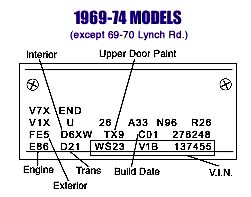|
|
The fender tags of 1962-66 cars are laid out in a very similar fashion. The scheduled build date is under the left portion of the “SO NUMBER”. The number under “BDY” (body) represents the car line and model, which is the same as the first three characters of the V.I.N. The number under “TRM” is the interior trim code, while the exterior trim codes are found under “PNT”. Sometimes the paint and trim codes are transposed, but this should be fairly obvious. The row of uppercase letters (4th line from the bottom) represents option categories. A number under any of these letters defines an option in that letter’s category. The row of numbers at the top of the tag are not yet known, but are thought to be routing, shipping, or gate information on 1962-64 models. For 1965, these numbers may represent option information in addition to routing information. Also for 1965, “A”, “B” and “C” take the place of 10, 11, and 12 in the production date for October, November and December. In 1966, the row of numbers at the top are replaced by a row of lowercase letters, which are another row of option categories. A number under any of these letters represent an option in that letter’s category. For information on decoding the option codes, see our selection of books by Galen Govier in the Literature section.
|













